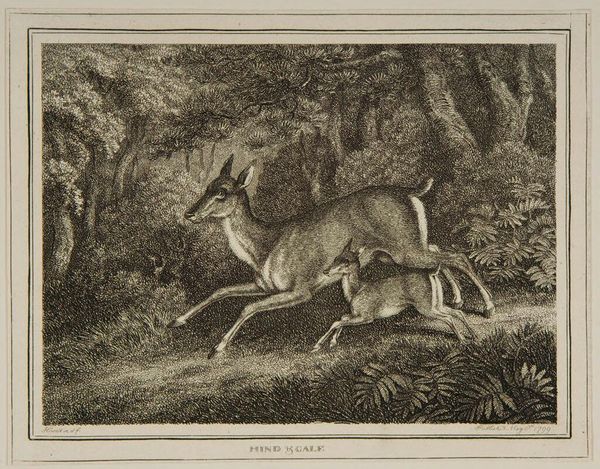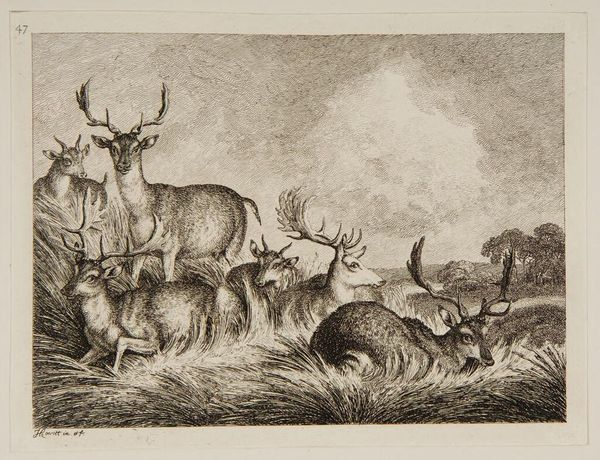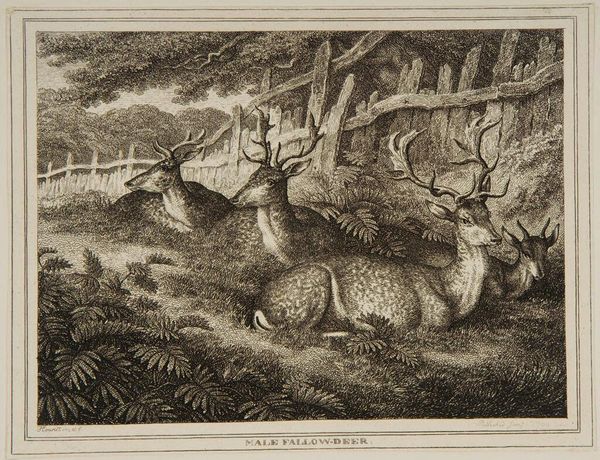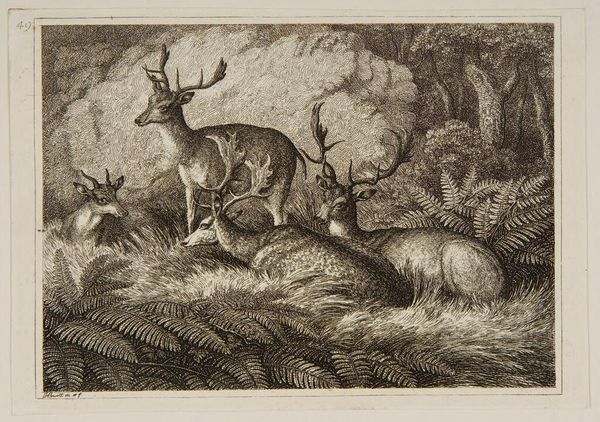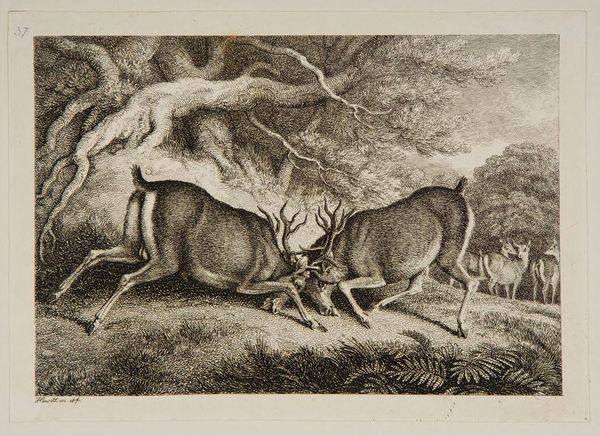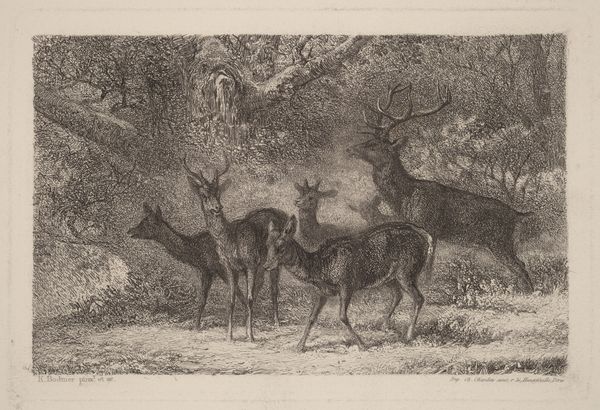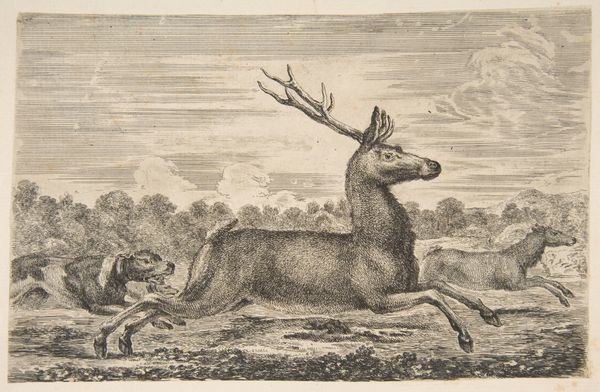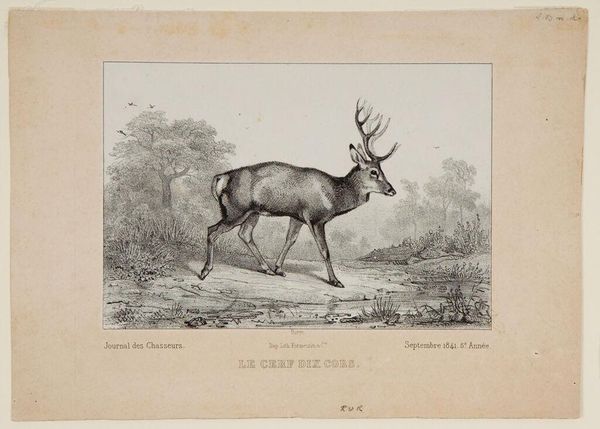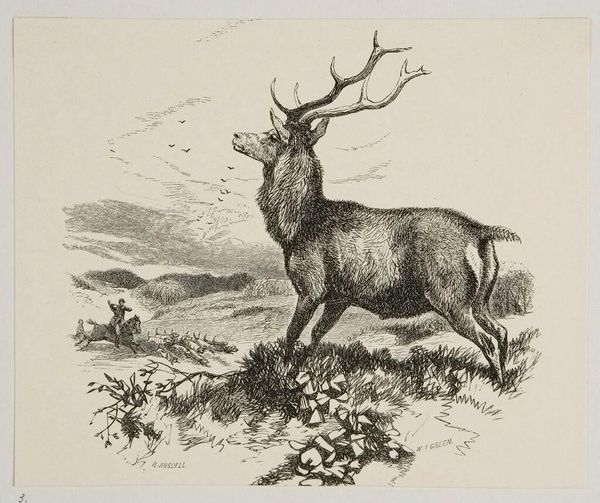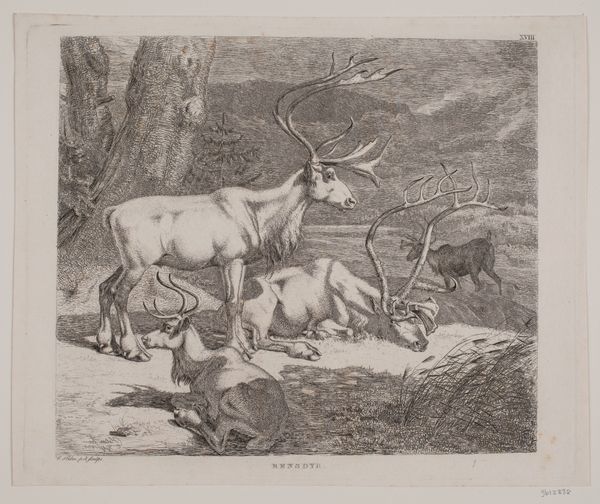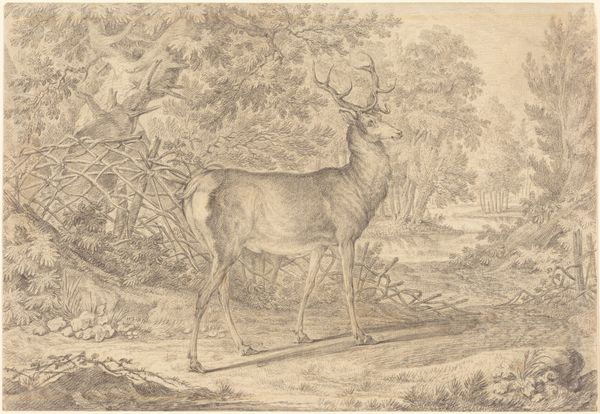
Copyright: CC0 1.0
Curator: This is Samuel Howitt's "Male Red Deer." Howitt, born in 1756, was known for his sporting and animal scenes. There's no date associated with the work, but it gives a glimpse into how animals were regarded, both aesthetically and materially. Editor: It’s quite striking. The texture achieved through the printmaking process gives it an almost velvety feel. It emphasizes the physicality of the deer—their muscle, bone, and fur. Curator: Exactly. Howitt's technique allows for a tangible representation of the deer, which speaks to the relationship between humans and animals as resources and subjects of observation. It also reflects the social status associated with hunting. Editor: I see the print as an object, too. The paper, the ink, the skill required for its production—each element tells a story of consumption and value. It’s not just about representing the animal but capturing its essence through accessible means. Curator: And by extension, making that world accessible to a wider audience, bringing the elite sport of hunting to those who could only experience it vicariously. Editor: A way to democratize access to what was usually an exclusive domain through material production. Curator: Precisely. It’s fascinating how closely the artistic process is bound to the social hierarchy it depicts. Editor: Indeed. It underscores the complex interplay of class, culture, and material expression that artworks embody.
Comments
No comments
Be the first to comment and join the conversation on the ultimate creative platform.
